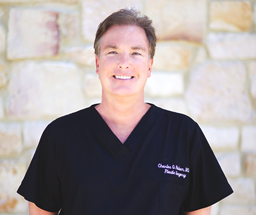Gynecomastia
Get it Off Your Chest
Gynecomastia is the medical term for enlarged male breast tissue. A relatively common condition which usually resolves after puberty, it can be especially painful and embarrassing if it persists into adulthood. Gynecomastia can have any number of causes, including drug use and obesity, though it is certainly not uncommon for it to develop for no identifiable reason. Sometimes, gynecomastia can be mitigated through diet and exercise, but often the fatty, fleshy tissue persists and surgery may be the only option to eliminate that tissue. But once accomplished, surgery can have plentiful benefits, including a more youthful overall look, improved confidence, and a more masculine chest.
Gynecomastia isn’t something that can be easily ignored, so if it’s something that is a source of social anxiety or low self-esteem, Dr. Polsen recommends scheduling a session to discuss your options. Call our Clear Lake office at (281) 538-6600, or contact us though our website for more anonymity. Sometimes insurance will help cover some of the costs associated with this surgery.
Overview:
- Gynecomastia is an enlarged male breast
- Surgery can correct gynocomastia, leading to a more masculine look
- Recovery: 1 week
Who is a Good Candidate?
Though gynecomastia can be caused by obesity, it’s important that candidates be in good general health and be of a relatively stable weight. Having elastic skin that will bounce back after surgery will also be helpful in the long term. Gynecomastia surgery is not something that can solve everything, however, so candidates should have a realistic set of expectations in terms of what their surgery will accomplish.
The Procedure
After Dr. Polsen agrees with his Houston Clear Lake Area gynecomastia surgery patients on how best to eliminate breast tissue and to what degree, you will schedule an out-patient gynecomastia surgery. This procedure will be performed under either local or general anesthesia, depending on the extent of the procedure and your discussions with Dr. Polsen. Generally, a small incision is made just at the edge of the areola, so as to better obscure any scarring, and excess fatty tissue will be extracted through that incision.
Everyone is different, and more extensive tissue removal will require more extensive incisions, and, therefore, more extensive recovery.
Recovery
After surgery, you may return to work in a matter of days, depending on your discomfort, but you should avoid strenuous activity for at least two weeks to avoid complications such as breast tissue irregularities or bleeding. Directly after the procedure, you may need to wear a pressure bandage and you may be fitted with a small tube to encourage drainage and mitigate swelling.
Dr. Polsen will work with you to develop a personalized recovery plan, and it’s important that you follow that plan, because it will be calibrated to ensure good results with a minimum of discomfort.

